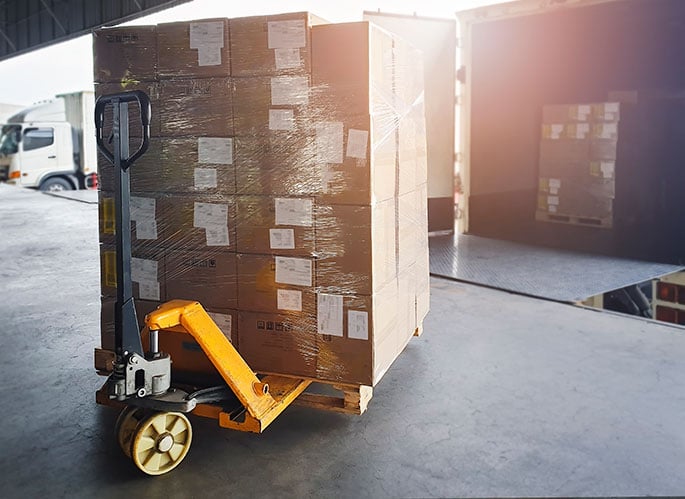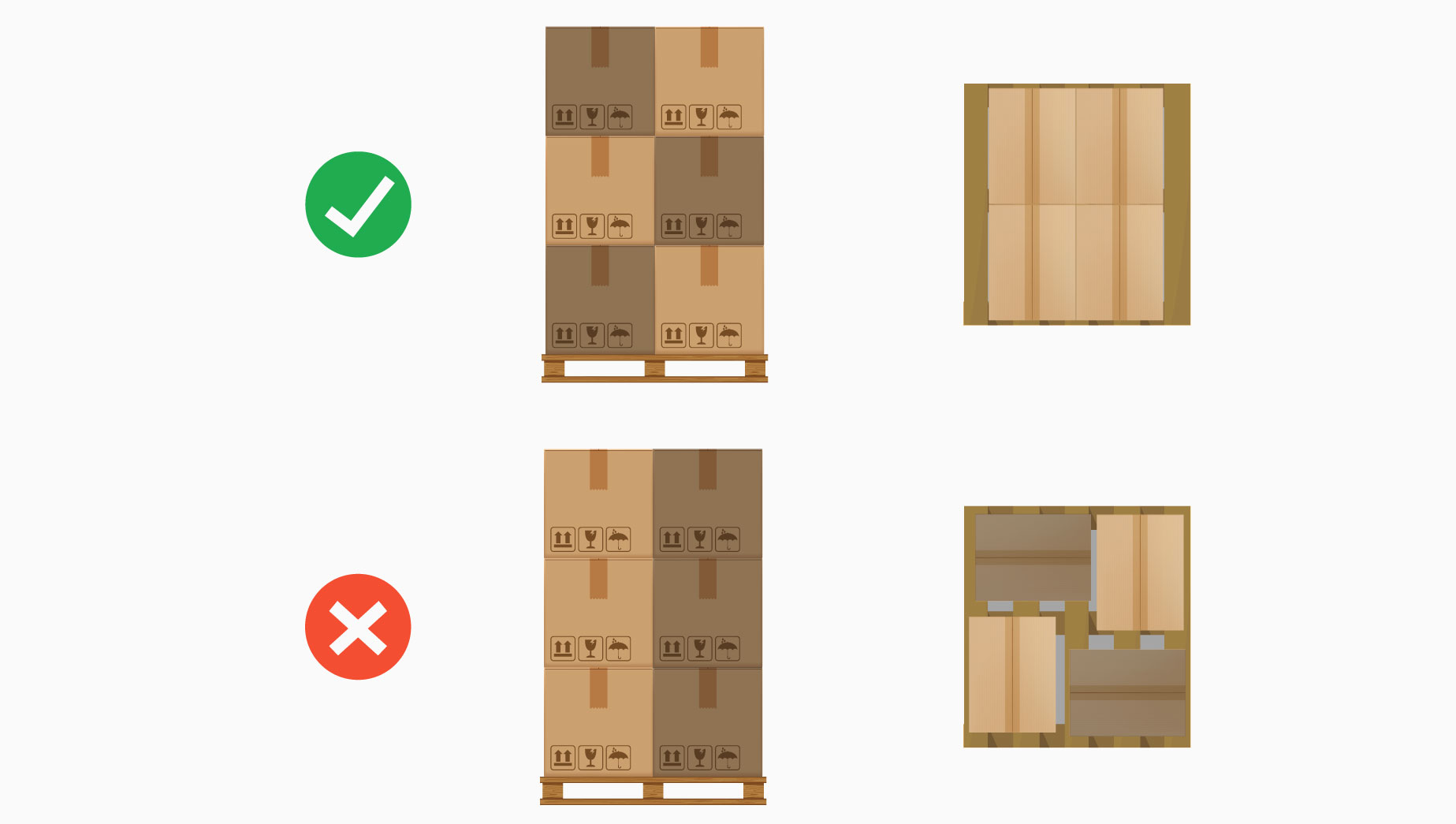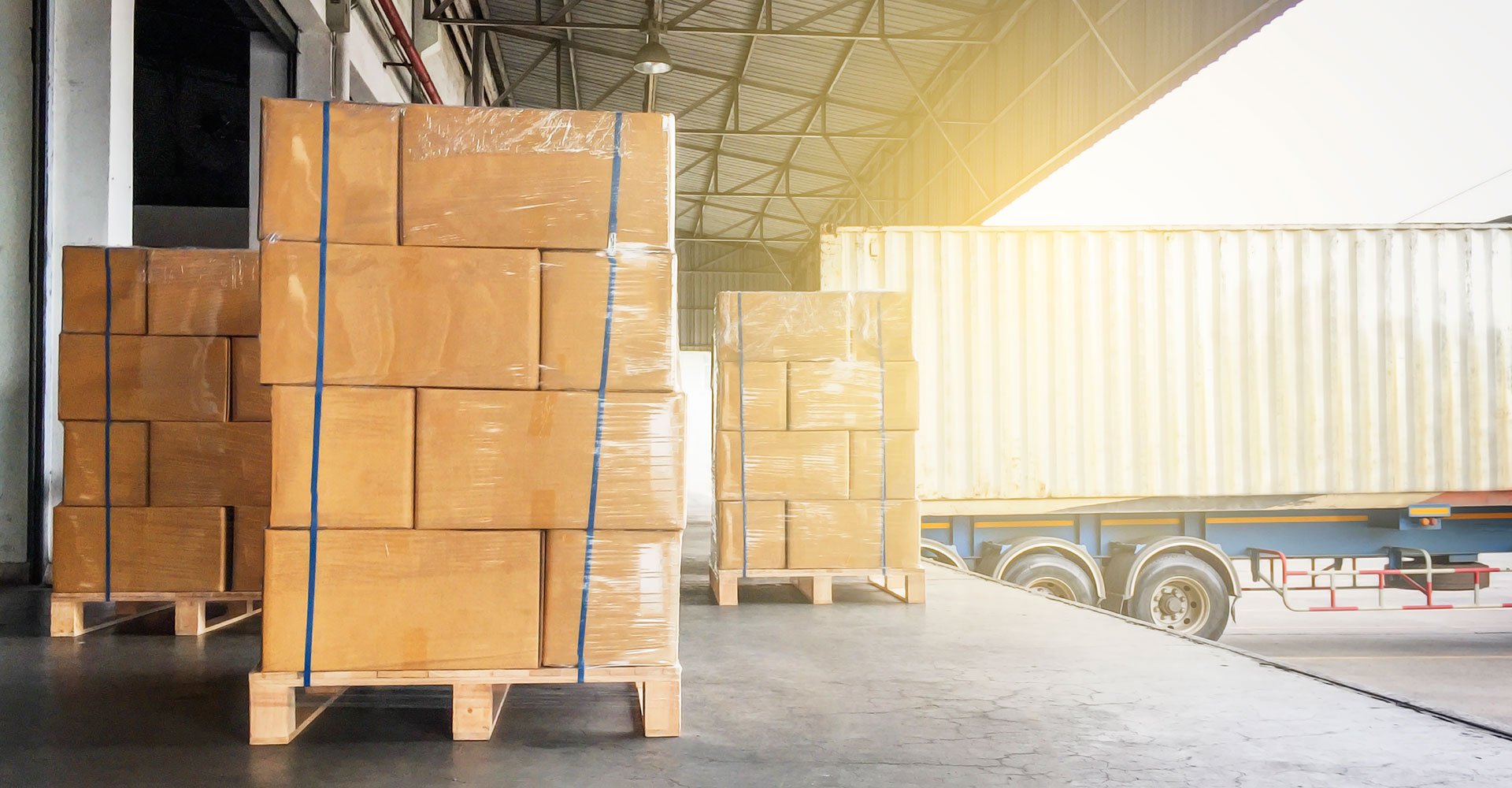For as long as people have been shipping goods, they have used platforms of some kind to aid in the process. By the early 20th century, the design was refined to accommodate advances in warehousing technology, and the modern pallet was born[1].
For many small-to-medium sized businesses, pallet shipping is the backbone of their supply chain, and with good reason. Pallets are quite literally designed for the safe, secure transport of goods.
With that said, nothing in shipping is perfect, and despite even the best-designed infrastructure, it’s not impossible for palletized cargo to be damaged during the shipping journey.
Just like correctly packing boxes, there are steps you can take to minimize the potential damage from transit by properly preparing your pallets, and that’s what we’re going to be looking at today!

Choose the Right Pallet for Your Shipment
By and large, pallets can be purchased in bulk quantities, and are reusable for several journeys. Pallets come in a variety of sizes, however they most commonly measure 40” by 48”. This size allows for 26 single-stacked pallets to fit side-by-side in a standard 53’ trailer.
Many retailers opt to use half-sized 40” by 24” pallets, for in-store use, as their smaller size allows for increased maneuverability in tighter quarters. However, this smaller size also means reduced carrying capacity, and so they are generally considered a less-efficient option for shipping.

While pallet sizes are largely standardized, the materials they are made from vary widely, and have their own strengths and weaknesses.
| Pallet Material | Pros | Cons |
| Wood |
|
|
|
Plastic |
|
|
| Paper |
|
|
| Steel |
|
|
No matter the material of the pallet you choose, you want to double-check for signs of age and structural damage, as well as any other signs of wear.
Safely Stack Your Goods
The key to properly stacking products on a pallet is to try to minimize movement of those products. Using an interlocking brick-stacking pattern, in which the pattern that a layer of boxes is packed, where it is reversed on each following layer, can increase the overall stability of the pallet. Furthermore, placing carboard slip sheets between layers can increase friction between layers and prevent boxes from slipping when the pallet is moved.

All boxes should be stacked by weight, with the heaviest boxes at the bottom and the lightest on top, and with as little gap between the boxes as possible, so as to lessen the risk of the wrap loosening and the pallet becoming unstable in transit.
Finally, it is important to ensure that your boxes stay within the dimensions of the pallet. 53’ trailers are designed to fit two standard pallets side-by-side with minimal leeway. Beyond that, there is the risk of your pallet collapsing due to overhang.
Keep Things Secure
There are a few options for securing your cargo to a pallet, and each provides benefits for a particular kind of cargo.
Stretch Wrap
Stretch wrap is the most commonly used method of securing cargo to a pallet. It is versatile and cost-effective, and able to accommodate loads in excess of 3000 lbs., depending on the gauge of wrap.
.png?width=1920&name=MicrosoftTeams-image%20(145).png)
When wrapping a pallet by hand, it is best practice to tie a short length of the wrap to the bottom of your pallet, pull the wrap tight along each corner as you wrap, and layer the wrap at least twice along each pass around the pallet.
Banding
Banding consists of thin strips of either nylon or metal wrapped around the pallet load which are crimped to secure the load.
Nylon banding is best suited for lighter loads consisting of larger boxes, or as reinforcement for shrink wrap. Metal banding, on the other hand should be used for heavier loads such as masonry products or industrial equipment.
In both instances, banding should be fed through the underside of a pallet when wrapped top-to-bottom. While nylon strapping can be secured by hand, using machinery will ensure a tighter fit.

Strapping
Strapping is similar to banding, but with two notable differences. For one, strapping is made of thicker, reusable nylon straps and a crank ratchet mechanism to cinch the straps. Because of this, strapping can be used for heavier loads than banding.
That said, strapping is best suited to secure large, or awkward singular objects to pallets, such as crates, pallet boxes, or furniture.
It is recommended to use a minimum of two straps when securing an item to a pallet with strapping and should be fed along the underside of the pallet to ensure the load is properly secured.
Get Your Safe, Stacked, Secured Pallets Shipped with Freightcom
After putting so much care into making sure your pallets are ready to ship, you want to make sure you’re shipping with with reliable carriers at unbeatable prices. That’s where Freightcom can help.
Our all-in-one platform offers exclusive rates on a wide array of shipping services for LTL! Contact one of our shipping experts Monday to Friday, 9am to 5pm EST at 1-877-335-8740 or by email at sales@freightcom.com and take a look at Freightcom’s total shipping solution!
[1] https://en.wikipedia.org/wiki/Pallet#History
[2] https://books.google.ca/books?id=P_Ixuott4doC&lpg=PA32&dq=ancient%20assyria%20skids&pg=PA32#v=onepage&q=ancient%20assyria%20skids&f=false

.png?width=250&height=58&name=MicrosoftTeams-image%20(28).png)